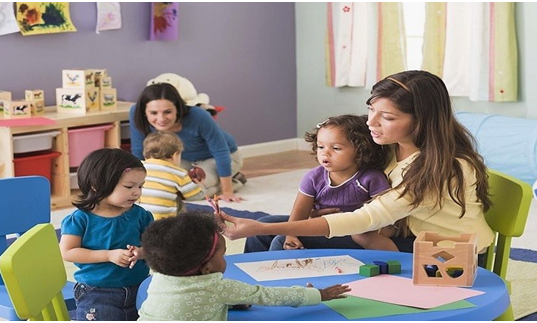5 Hands-On Strategies For Dealing With Tantrums In The Classroom
Being a teaching professional, it’s not an easy job to manage all sorts of learners in a classroom. Sometimes, they have to deal with temper tantrums. Nevertheless, it is normal for children to have temper tantrums. In this way, they express their anger, disappointment, or frustration.
As a skilled teacher, you can support your student learning that he/she can express feelings without having to shout, cryor be destructive. A tantrum is a powerful countenance of emotions, such as anger, harm, disappointment, deep frustration, etc. Usually, in young children, this emotional outbreak can lead to crying, whipping, screaming turns, stomping, hitting the parents, falling down, kicking, biting, throwing belongings, banging the head and so on.

Kinds Of Toddler Tantrum
Generally, there are two types of temper tantrums -
- Emotional meltdown
- Non-emotional tantrums
Practical Approaches to Deal with Toddler Tantrums
Here are five simple ideas to support toddlers manage frustration:
1. Don’t Try To Reason
Try not to reason with your learner when he/she has a tantrum. Trying to talk to or reason with a child who is in the middle of a tantrum generally makes things shoddier. Observations meant to calm your student can increase his/her anger and get in the way of letting him/her learn how to calm down on his/her own. Remaining calm and patiently waiting for your student to stop is effective.
2. Discuss Emotions
The most significant thing to do is talk with children about tantrums and emotions. Discussing why individuals get troubled helps your students to understand the situations gradually. You may try role-playing so the children have opportunities to think about how to manage their emotions in a positive way when they become upset or irritated.
3. Understand Your Students
Pay attention to your students’ behaviour well. Get to know your schoolchildren by talking frequently about their likes and dislikes and what makes them happy or sad. Try to find out what triggers them, try to read their facial expressions and observe the times of the day that are most problematic for them. If you can find out these aspects, many tantrums can be prevented.
4. Responding to Tantrums
Your response affects the probability of the behavior happening yet again. There are lots of precise protocols to aid you to respond reliably that will minimize tantrum behavior later. Here’s some guidance:
- Keep everyone secure
- Maintain your cool
- Deliver a calm space
- Talk through it
- Encourage responsiveness
Modeling calm behaviour is important because it aids you communicate more effectively with a child.
5. Teach Healthy Ways
Remember, every child is unique, and what works for one child may not work for another. Following are some approaches for other activities your student can do when he/she starts to get distressed.
- Self-comforting actions: Hug a stuffed animal, take a bubble bath, or lie down.
- Verbal: Talk to a friend or pet, tell jokes, or sing.
- Physical: Run, swim, ride a bike, dance, pound play dough and so on.
- Visual: Watch funny videos, or read a comic book.
- Creative: Write, draw, play music, or make something.
As temper tantrums are a normal part of child development, sometimes they cannot be prohibited.
Dealing with tantrums isn’t easy, but these neural trails are crucial for the kid to manage anxiety and be self-confident later in life. Early Years Care and Education Program supports teaching professionals as well as parents to manage tantrums effectively with various techniques. Helping toddlers control their emotions throughout temper tantrums is one of the most important jobs in teaching during childhood development.















